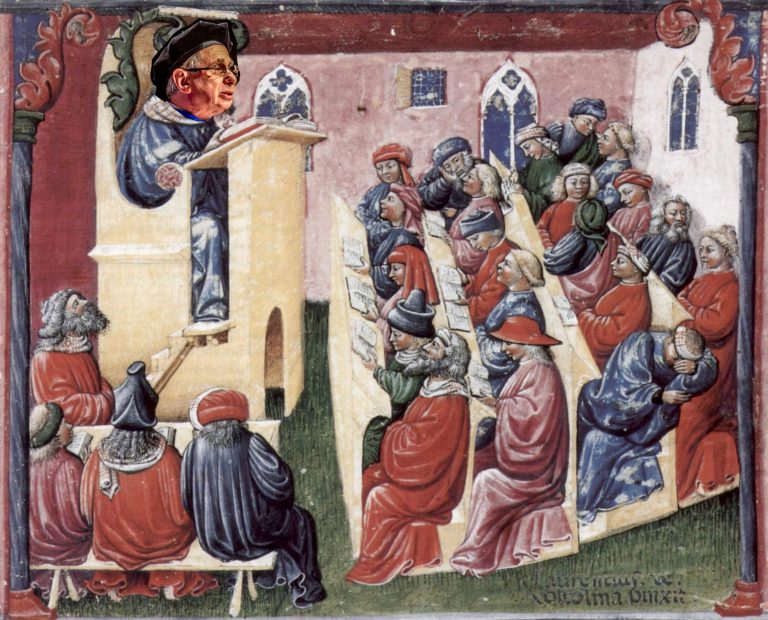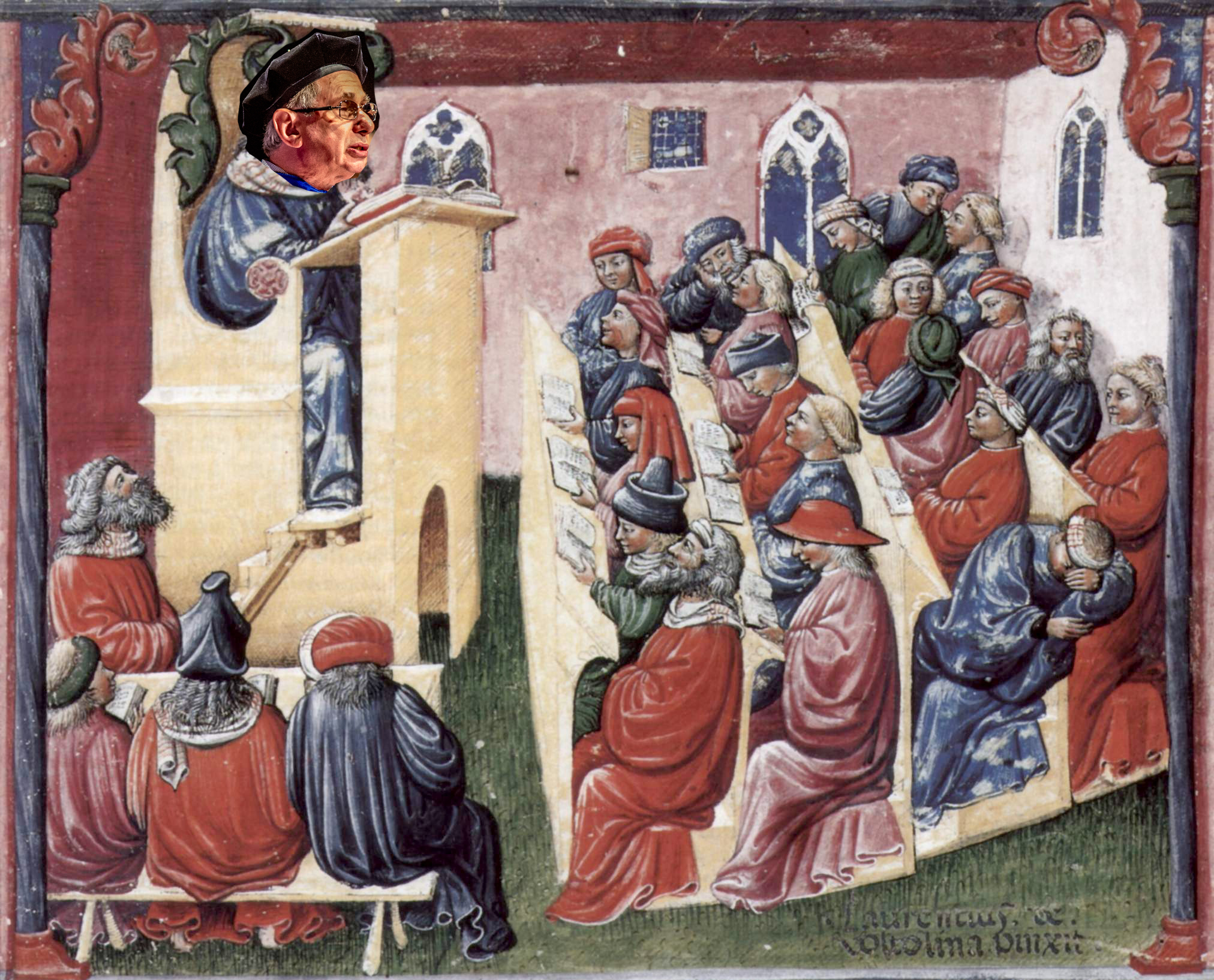Center for the Future of the Health Professions May 2022 digest
Posted: May 12, 2022
This month, The Center for the Future of the Health Professions will be posting another monthly op-ed column for 2022. Our columns represent strong, informed, and focused opinions on issues that affect the future of the health professions. As mentioned in the past, the center was developed to provide state, local, and national policymakers and health system stakeholders with accurate, reliable, and comprehensive data and research about the healthcare workforce to effectively plan for a sustainable future and make the best use of available resources.
This month features a follow up to last June’s article entitled “Confessions of a recovering sage on the stage performer” by Dr. Gevitz. This month features further discussion surrounding the traditional classroom lectures for health professions students in another tongue-in-cheek presentation by Norman Gevitz, PhD, professor of history and sociology of health professions and senior vice president-academic affairs at A.T. Still University (ATSU). We look forward to your response.
I received a mixed reaction to my essay following my previous piece in the Digest. Some readers defended “the lecture” as the most time-efficient means by which students can organize their studying for an exam given by a professor. Actually, I agree, but with this caveat. There is no necessary correlation between passing an internal examination on a delimited amount of subject matter and preparing for and doing well on an externally administered assessment on a broader and deeper set of learning objectives on the same subject.
When I was at the Ohio University College of Osteopathic Medicine, faculty members worked in teams to put together the Calgary-style curriculum. We had approximately 12 teams, and each team—usually five members—were composed of at least one basic scientist, one clinician, and one social scientist. During the first meeting of the “respiratory block” meeting, I left the room briefly, and upon my return, I found that I was elected the block leader in my absence. For 10 years, I led the block and benefitted by having and retaining three other core members who took the task seriously of organizing the curriculum, deciding on learning objectives, scheduling, preventing the presentation of duplicative material, and writing and selecting test questions. Individual faculty members owned the curriculum they were responsible for but not the assessment, which was a block committee’s responsibility. All questions, whether written by the given presenter or by members of the block committee, were tied to stated learning objectives, and the presenter could not give hints on what would be on the test as she/he did not know. This meant that the student studied a broad set of learning objectives rather than just a PowerPoint which we concluded better-prepared students for taking an externally administered exam.
In my last piece for the Digest, I argued that a lecture is warranted when it brings together a synthesis of material not to be found in a textbook or another single source. Some readers challenged me with giving an example. Such is the purpose of the rest of this essay, based on a lecture I gave at Ohio University and how I would now hopefully improve it.
The lecture was entitled “Feces happens: A brief history of constipation and diarrhea.” I was asked by members of the gastrointestinal block to provide either an ethical or social science presentation as our college goal was to ensure that all blocks integrated the social dimension of medicine. I responded with the aforementioned title explaining to the block members my familiarity with the history of unorthodox and over-the-counter remedies to treating constipation as well as the differing perceptions of physicians and patients over the significance of constipation and diarrhea, where patients—particularly older patients—believed that a daily bowel evacuation was a vital key to their health. In contrast, physicians regarded diarrhea as a more concerning symptom of an underlying problem. The block members agreed with my reasoning, and I began to create my presentation.
Indeed, it was a novel subject—not something one would ordinarily find in a gastroenterology text. Two history of medicine colleagues, James Whorton and Micaela Fowler-Sullivan, had written seminal pieces on earlier physicians’—both orthodox and orthodox—fascination with the colon and the interesting and unusual means employed to keep defecation regular. They also explored theories of autointoxication, whereby scientists and others postulated that gases and bacteria escaped the colon and these agents were responsible for a plethora of systemic ills of humankind. In addition, I recovered advertisements for various prescribed and over-the-counter remedies and examined studies that estimated the number or percentage of patients whose presenting complaint was missing their daily bowel movement. Finally, I read articles that included discussions of delayed care for dehydrated patients who did not think their diarrhea was symptomatic of anything serious. I had great fun putting this presentation together. The slides were colorful and somewhat startling. I had time at various points during the presentation to engage the students in discussion.
Based on the student evaluations, I believe I accomplished my overriding goal, which was to get students to recognize that patient and physician perceptions of the seriousness of symptoms or maladies may differ, and part of the responsibility of physicians is to educate patients. For example, taking over-the-counter remedies for constipation, particularly in large doses, can be harmful, as well as ignoring persistent diarrhea. Nevertheless, the student evaluations also revealed a serious failure on my part. While certainly, I included a social science element into the gastrointestinal block curriculum, I had not sufficiently melded a basic science or clinical dimension into my presentation. In the words of one student’s stinging rebuke, “Dr. Gevitz gave a fascinating presentation, but how does any of the material he presented help me prepare me for the board exams? What a waste!” My first reaction was to dismiss the comment. Indeed, not everything presented in the medical school curriculum needs to be tested on the national boards. However, the more I thought about it, the more I became convinced I had missed an opportunity to be more integrative.
To do so, I would now extend the one-hour session to a two-hour presentation and team-teach “Feces happens” with a basic scientist and a clinician. The basic scientist would discuss the process by which fecal matter is ultimately formed and how the elimination of waste material in a solid, semi-solid, or liquid state occurs. The basic scientist and the clinician would discuss the underlying pathology associated with constipation and diarrhea. The clinician would also discuss the clinical manifestations of the underlying pathology and the medical or surgical treatment or recommended change of diet and lifestyle. Also, extending the session to two hours would allow more time for class discussion and interaction. This organization of the session would better accomplish greater integration of basic science, clinical science, and social science materials.
As faculty members, we tend to forget the good student reviews and remember the stinging ones. Sometimes the stinging ones are a reminder that we are not the only or ultimate arbiter of the quality or usefulness of a presentation. These reviews may, on occasion, push us to make our presentations better. Hopefully, it all comes out better in the end.
